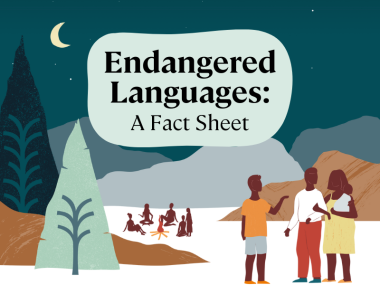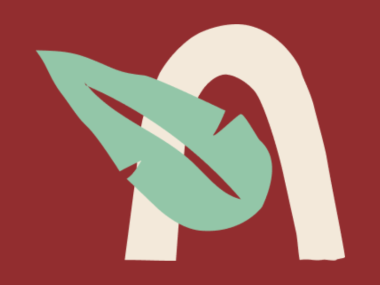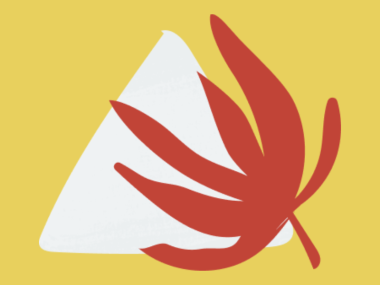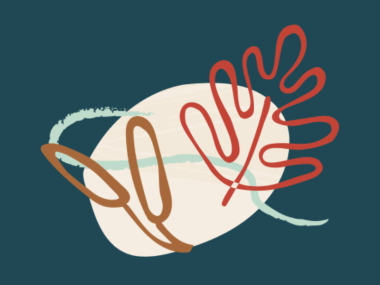What would happen if you did some introspection into your own family history? Has your family always lived in the same place that you were born? Do you speak the same languages that your great-grandparents speak? Well, for many people the answers to this question could lead to an interesting journey of self-discovery, and this could be the beginning of a language reclamation process.
Following the work of Wesley Leonard, a citizen of the Miami Tribe of Oklahoma, language reclamation is “a larger effort by a community to claim its right to speak a language and to set associated goals in response to community needs and perspectives” (Leonard 2012). However, this term is still discussed among researchers and communities. Even though external and socio-political factors, such as colonization, have disenfranchised people from their language, the reclaiming of identity and culture reflects a political stance, since the language which our family speaks/spoke also belongs to us.
My two parents are from La Mixteca Baja, my mother from the Puebla-side and my father from the Oaxaca-side. They migrated from their communities and met in Mexico City, where I was born and raised. We have always had a very close link to our land with our traditions and festivities. My father has always told me that we are Oaxaqueñxs, in fact my brother and I were registered in his community, and we always said that we are proudly Oaxaqueñxs. However, when I found out that my grandmother, in Puebla, was a rememberer of Dà’àn Davi, a variety of Mixtec, I started calling myself Ña’à Davi (Mixtec woman). I did this because it feels more complete to be Ña’à Davi than Oaxaqueña, since both of my parents’ communities are in the same cultural region, and because it is also part of who I am. However, I will always relate to the identity of being Oaxaqueña, as well as Chilanga, which is a complicated demonym for people who live in Mexico City.
During my own journey, I have found people like me who are in the same adventure of reclaiming their languages in multiple ways. Although language reclamation is a community effort, I think that starting with personal introspection is a big step towards this. Language is the heart of every culture, everything is related to it, and language work can be more meaningful when a political stance is associated with it, since our engagement with language work becomes a life path.
The aim of this post is to share a collection of different processes of language reclamation and identity from multiple perspectives. The first five resources speak to the Mexican context. The first one is a video explaining basic concepts of the topic in Spanish, and the following stories are from people who have migrated from their origin places but still have a close link to their homelands. In resources six through ten, the language reclamation stories of community members from different parts of the world are described in English.
1. El reclamo lingüístico y el activismo lingüístico: una mirada etnográfica
In this video presented by Dra. Haley de Korne, you can learn about what language reclamation is, and how it is related to language activism. The talk is centered in explaining the terms related to this subject, and carefully dismantling common misconceptions about minoritized languages, dialects and ideologies.
2. ¿Soñarás en mixteco, abuelita?
Aída Naxhielly, a young woman from La Mixteca region, describes the story of her family, and how it has been to re-learn her language at the side of her grandmother. She also speaks about her own experience by evoking the storyline of the movie “Sueño en otro idioma”, which is about a language documentation project for a language with only 2 speakers.
3. La lengua de mi abuelita es mi casa
In this post, Ana León remembers how she realized that the mother tongue of her grandmother was not Spanish, but Nahuatl. This discovery has made her think about how a language could be a home, and she can also be welcome there by re-learning Nahuatl and talking to her grandmother.
4. Cantar en mexicano es conectarme con mis abuelos y mis antepasados
This is the story of Diana, a young girl who has reconnected with her grandmother through son huasteco, a music genre originally from la Huasteca, where Nahuatl or Mexicano is spoken. She learnt how to play the jarana, even though this type of music has been reserved for men only. Now she has a group where she sings in Nahuatl and speaks the language fluently. Here is a video, if you want to have a look.
Tu’un Savi is the autonym (the name used by speakers) of one of the variants of Mixtec. In this documentary, Uriel López reflects on his relationship with Tu’un Savi, the mother language of his parents. He questions why he does not speak the same language as his family, and explains that it was a shock to discover the reasons. He speaks throughout the documentary in Tu’un Savi, since he has been learning the language. You can watch the trailer and an interview about it online.
6. By learning Kanien'kéha, U of T grad Andrea Johns launched a journey of self-discovery
This post presents the story of Andrea Johns, a student at the University of Toronto. She first encountered Kanien'kéha in a university class during her second year at the University. She has developed a deeper understanding of her identity, heritage and the language of her ancestors through her classes. Now, she has conversational-level proficiency in the Mohawk language, Kanien'kéha.
7. Keeping my language alive: The perfect imperfections
This is a three-part documentary based on the lived experiences of Sandjock Likinè (aka Veronica Quillien), a heritage language learner. She tells her story about a process of recovery and discovery of traditional sounds, dances, and words by reclaiming her language, Bàsàa, and reclaiming her roots from southern Cameroon.
This article is focused on storywork as a tool for language reclamation, since it is an experiential narrative that includes epistemic (ways of knowing), theoretical, pedagogical, and methodological lenses. This approach highlights how language reclamation can be developed, i.e, it is related not only to a physical space but also to mental and emotional places in each person and community. It also presents different ways of talking, from specialized academic and community terms to everyday speech. This article presents how all this can be present in individual and communal journeys from diverse Indigenous communities: Chickasaw, Mojave, Miami, Hopi, Mohawk, Navajo, and Native Hawaiian. You can also check Jo-Ann Archibald's book which informed this paper. It shows how stories have the power to educate and heal the heart, mind, body, and spirit.
9. Family at the Heart of Chickasaw Language Reclamation
This article examines intergenerational perspectives in the importance of Chikashshanompa’ to Chickasaw families. It started with the author's autoethnographic account of her own efforts to learn her language. She also presents a discussion of contemporary Chickasaw language work among families, and their culturally grounded research methods.
10. Repairing the Broken Arrow | Rebuilding Cultural Identity through Art and Language
In this post, the artist Barbara Derrick shares that she has struggled with her personal and cultural identity. Although she intellectually knew that she was Tsilhqot’in, she did not understand the language’s connection to the earth. However, through her art that depicts cultural elements, and by learning the language, she found a direction in repairing damage or breaks caused by assimilation and language shift.
Knowing other people’s experiences is a great way of reflecting on our own work. It’s important to keep in mind that it could be painful to ask about certain topics, so we need to be very respectful when we approach our elders and our roots. Language reclamation is a process, and it takes time. I hope you find these materials useful to your own language work, or find anything relevant to help other people’s work. Enjoy!




